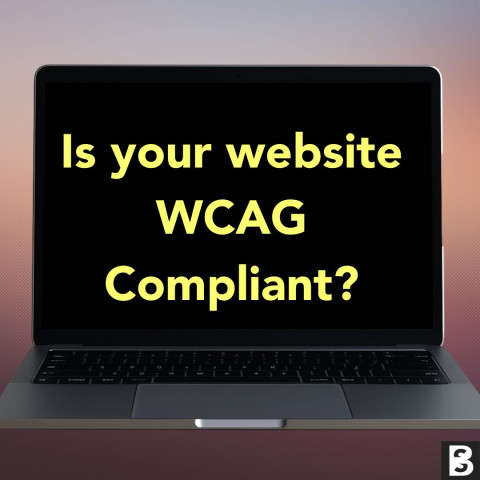Business Sustainability audit – using the findings
Many businesses recognise the advantages of becoming more sustainable. However, determining where to start and pinpointing the most suitable sustainability changes can be challenging, this is where a sustainability audit becomes invaluable.
By closely examining every aspect of your business across the entire value chain, you can accurately evaluate how your practices align with sustainable best practices. This process enables you to plan the changes you wish to implement in the coming months and years.
1. Using your audit findings
When you have completed your audit, you will have a rating for each area, giving you an insight into where you have opportunities to focus your sustainability efforts.
- What’s possible for your individual business will depend on your current circumstances and this is where your Audit Team comes in.
- Calculate your Carbon Footprint.
- Review the audit findings together – are there any quick wins which you could implement and start reaping the rewards of straight away?
- Identify any opportunities which fit in with your plans for the coming months i.e. if you’re making any building updates can you incorporate any energy or water-saving projects?
- Assess if the audit flagged any areas which have so far been overlooked in terms of sustainability and where you need to brainstorm what changes you could make?
2. First steps
First things first, take a deep breath. Becoming more sustainable won’t happen overnight and it’s likely you may have more areas to focus on than you initially anticipated. If that’s the case, remember, small, incremental adjustments can have a huge impact over time and will also go a long way to changing your culture, making future adaptations easier to implement.
a. Decide your priorities
- Now you know the areas where most progress is needed, pick one or two to focus on initially.
- Trying to do everything at once means you won’t be able to easily assess the effects of the changes you make.
- You may want to prioritise areas where the changes needed are low-cost or easier to implement, or that align with your business strategy.
b. Set clear targets and timelines
- Once you’ve chosen an area of focus, it’s time for a clear plan.
- Decide what timeframe you want to conduct your activity over and what improvements you want to see.
- Remember to set goals that are SMART - specific, measurable, achievable, realistic, and timed.
c. Share the findings
- Even if your findings aren’t very positive, share them with your employees and outline what steps you’re going to take as a result.
- Getting everyone on board will make it easier to introduce changes and your staff may have some great ideas to support your plans.
d. Bring in external support
If your results have left you feeling overwhelmed, it may be useful to bring in some external support. Someone who can take an objective look at your business and identify the key changes needed.
3. Key areas to review from your checklist
a. Energy
- Make the switch to LEDs, it may seem like a simple change but switching out traditional incandescent bulbs for LEDs can significantly reduce both your carbon emissions and your energy bills.
- Typically, two-thirds of heat generated in a building is lost through the building’s fabric.
- Switch to energy-saving appliances and machines in the office and production areas.
- Improve insulation and install programmable thermostats to use less heating and cooling energy.
- Choose energy suppliers that provide renewable energy sources like wind or solar power.
b. Renewable energy technology
- There are several renewable energy options, going a step further and produce your own energy using wind power, solar panels, ground source heat pumps or combined heat and power.
- If opting to produce your own renewable energy, it’s important to consider both the upfront cost and also how long it will take for you to recoup your investment through energy cost savings.
- Solar PV panels are a popular option for businesses as they are suitable in urban environments.
DID YOU KNOW
In a 120sq ft office, swapping out 20 60-watt lights for LEDs could result in cost savings of around £240 a year and emissions savings of 1,039.64kg.
The same amount of CO2 generated by driving 2,571 miles. (inui.co.uk)
c. Transport
- Upgrading your fleet to be more sustainable is a big commitment, but one which can reap benefits in terms of reduced emissions and lower ongoing running costs.
- Also consider providing charging stations at your premises.
- In terms of deciding which low-emission vehicles are right for you, it’s worth considering what vehicles are most practical payload and load volume to meet your needs and what is their whole lifetime cost as well as the upfront cost.
- Promote Remote Work: Allow employees to work from home to reduce commuting emissions.
- Encourage Eco-Friendly Commutes: Support biking, walking, carpooling, or using public transport.
The Low Carbon Vehicle Partnership suggests the four- year cost saving for a small panel Battery Electric Van is £3,688, or £19,938 if used in the London Congestion Zone five days a week – considering the initial vehicle cost, fuel, tax and maintenance.
For plug-in hybrid and extended range electric vehicles, the expected savings across four years are £1,768 or £14,768 if used in the London Congestion Zone.5
d. Waste and recycling
- Invest in machinery to help recycling efforts
- Minimize waste generation through better resource management.
- Set up systems for recycling and composting waste at the workplace.
- Cardboard is a significant waste stream for many small to medium-sized enterprises. Investing in machinery like balers can help flatten and compress cardboard, making it easier to transport it to recycling facilities and helping reduce often costly collection fees.
- Eco-friendly packaging has the potential to reduce your carbon footprint, minimise overheads and boost your green credentials with customers increasingly looking for sustainable options.
- Shifting to a lightweight design is one way to reduce your packaging’s environmental impact while also reducing shipping costs. This could be as simple as always using boxes that fit the product rather than being too big. This would not only cut down on wasted material, but also transport costs.
DID YOU KNOW
Experts suggest that between 20% and 25% of packaging-related expenses can be saved if companies ditch oversized packaging!
Someone should tell Amazon!
e. Water
Tap adaptors which fit on existing taps combine water with air to lower output by as much as 50%, while switching to sensor or spray taps cuts tap water use by as much as 70%.
If your workplace has showers, or is looking to install them, aerating showerheads can cut water flow by as much as 50%. ‘Save-a-Flush bags’, which you place in the toilet cistern, can cost less than £2 each but save 1.2 litres of water for every flush.
Rainwater recycling system
- Rainwater recycling systems can help reduce mains water consumption by over 50%. (yorkshirewater.com)
- How much the initial system costs depend on various factors including the tank capacity, size and shape, where the tank/s will be located and whether a bespoke solution is required.
- Businesses may also require more sophisticated systems which include leak detection, additional disinfection measures and multiple pumps.
f. Suppliers
- Raising environmental awareness means demonstrating that your company is serious about decarbonizing and becoming more sustainable in every area it possibly can – which includes your suppliers.
- Seeking to cultivate a more sustainable supply chain, and determining if your current suppliers are also committed to promoting environmental awareness – is a great way to continue promoting environmental awareness within your own workplace.
- Engage with suppliers on the sustainability of their supply chain and procurement
- Contacting your suppliers on sustainability can bring numerous business benefits, including reducing reputational risk through greater transparency, and cost and emissions savings through increased collaboration in areas like packaging and transport.
- Ways to encourage engagement between you and your suppliers could include regular meetings – virtual or face-to-face – for sharing experiences and best practice.
- You could also introduce supplier score cards which can be completed annually to help identify which suppliers are meeting your green requirements and, particularly with critical suppliers, can also be used as a starting point for discussions about sustainability.
g. Social
- Following in the footsteps of Amazon and Facebook and establishing a green space in your workplace not only boosts your green credentials it can improve employee wellbeing and productivity.
- Adding a wildlife garden or pond to any outdoor space can also help boost biodiversity, while planning and developing the area is a great team building activity. Having a sustainability specialist on staff can help drive your green agenda and ensure it maintains momentum.
DID YOU KNOW
55% of employees consider proximity to green space to be important in their ideal work environment (Savills.co.uk)
4. Additional methods to reduce your Carbon Footprint and reach Net Zero
To help a business reach net zero emissions, which means balancing the amount of greenhouse gases emitted with the amount removed or offset, here are some straightforward methods that can be implemented:
a. Change Business Practices
- Reduce paper use by moving to digital documents and processes.
- Minimize business travel and use video conferencing instead.
c. Carbon Offsetting
- Purchase carbon credits by investing in environmental projects like reforestation or renewable energy projects that compensate for your emissions.
- Plant Trees and Support Reforestation: Companies can engage in or sponsor tree planting and reforestation projects. Trees absorb carbon dioxide from the atmosphere, helping to offset emissions. Partnering with organizations that conduct these activities can ensure effectiveness and sustainability.
c. Engage and Educate
Providing all staff with sustainability training is a great way to create a greener culture within your organisation and equip them with the skills they need to support your sustainability initiatives.
- Training can be informal, from simple lunch and learns with experts to more formal training programmes using an external provider.
- Training can include: identifying opportunities, managing transformational change, measurement, reporting and communicating sustainability to both employees and customers.
- There’s no better way to incentivize your employees to put their newfound environmental awareness into action than to host fun activities or even challenges in the office!
- For instance, challenging your employees to go vegan for a month or to ride a bike every day for a week to work in exchange for a small gift card or prize can help to raise further environmental awareness while keeping the spirit of the office lighthearted.
- Overall, there are several different ways to promote environmental awareness in your business – but the best methods to engage your employees in environmental awareness will be contingent on your company’s current culture and individual climate goals.
AND OF COURSE SHARE YOUR ENDEAVOURS ON SOCIAL MEDIA!
d. Aim for Environmental Certifications
Companies that make an effort to receive environmental certifications such as ISO certifications, becoming Bcorp certified and more, can help demonstrate an effort to promote the importance of environmental awareness.
e. Hire a sustainability specialist
- Having a sustainability specialist on staff can help drive your green agenda and ensure it maintains momentum. If left solely with the existing management team there is a risk sustainability will take a back seat to other operational priorities.
- A sustainability manager needs to be able to reconcile your day-to-day operations with the innovative sustainability activities that are increasingly required by customers, investors, and your supply chain.
- Key skills for a sustainability manager include a good understanding of your industry, strong communication, conflict management, strategic planning, and innovative thinking.
- Having a sustainability manager can also ensure you maximise the benefits of going green – they can improve your public image by demonstrating your commitment to the environment and improve your bottom line by accelerating practices that promote efficiency.
f. Monitor and Adjust
- Regularly measure your business's emissions to see where you stand and to find new ways to reduce.
- Have clear, achievable goals for reducing emissions over time.
By combining these strategies, businesses can effectively move towards net zero emissions, reducing their environmental impact while often also discovering benefits like cost savings and improved company reputation.
g. Re-audit after a set period
- The audit shouldn’t be a one-off activity.
- Save a copy and re-look at it every quarter or six-monthly, perhaps just focusing on the areas you’ve been trying to address. Hopefully you’ll see clear progress.
The results of the sustainability audit should have offered invaluable insights into your business's operations and environmental impact. By implementing the findings and recommendations, the company can actively reduce its carbon footprint, enhancing operational efficiency, and mitigating risks. Through a steadfast commitment to sustainability, your company can align its practices with the values of its stakeholders and contributing to a healthier planet for future generations. Moving forward, your company should remain dedicated to continuous improvement, innovation, and responsible ownership, ensuring that sustainability remains a cornerstone of its business strategy.
Choosing bespoke software solutions not only tailors technology to your unique business needs but also reflects our shared commitment to fostering sustainable business practices while saving you time and money. Contact us now and start your sustainability journey!

Mailchimp Alternatives Guide 2025
Is Mailchimp still the best FOR EMAIL MARKETING? Or are UK businesses find...
5 min read

The Hidden Cost of Poor System Integration
Why Poor Integration Between Systems Is Holding Your Business Back And How...
8 min read

Admin Overload: The Silent Business Killer
The cost of manual, repetitive admin tasks In countless small and medium-s...
3 min read

